For more than 70 years, Isobel Harling lovingly cared for the graves of nine soldiers who died far from home.
Today, she unveiled a permanent memorial to the men of Force K6 (later re-named the Indian Contingent) for their contribution to the Allies in both world wars.
Obviously, the tribute marks the role they played in supporting the frontline.
But it also recognises the bond they forged with the people of Kingussie they lived beside.
The soldiers served in the AT (animal transport) companies of the Royal Indian Army Service Corps (RIASC).
Troops played important role at Dunkirk
The Muslim and Hindu troops played an important role at Dunkirk in 1940 and throughout the rest of the hostilities.
From June 1942, they had several camps in Badenoch and Strathspey.
From there, they joined winter warfare training in the Cairngorm mountains.
They also went north to Golspie and east to Corgarff in Aberdeenshire.
But 14 members of the Force K6 men died in Scotland, with nine of them buried in the New Cemetery at Kingussie.
This represents the largest number of Force K6 soldiers interred together in the UK.
Mrs Harling was still in her 20s when she began looking after the nine graves.
Every year since 1946 she placed poppies on the headstones on the anniversaries of each of their deaths.
She was recommended for the BEM, in part for her dedication to the graves.
So the great-grandmother, now 99, was the perfect person to unveil the new memorial in the town’s Gynack Memorial Gardens.
The former Wren lost her son in the war and his grave was tended by people in Belgium where he was buried.
Her daughter Gaynoll Craig said she later looked after the graves of the Indian and Pakistani soldiers with the same care as those looking after her son’s resting place, referring to them as My Boys.
A beacon of Highland hospitality
Mrs Craig said: “It was a beautiful celebration. The memorial is stunning and will really add to the memorial gardens.
“It is a real beacon of Highland hospitality in its true form.
“It was wonderful for mum to be here and to take part in the ceremony. If she’s well enough she hopes to get to see the memorial from time to time.”
The graves and the new memorial are now looked after by the Commonwealth War Graves Commission.
Patricia Keppie, the commission’s public engagement coordinator for the north and east Scotland, said: “To have a local person like Isobel dedicating so much time in making sure these graves were tidy and the men were remembered was hugely important.”
Sir Alistair Irwin, former president of Legion Scotland, said it was the moment to think of the men and their families.
“When they arrived in these parts they would all have had hopes of returning to their own homes.
“But fate was to dictate that they, unlike so many of their more fortunate comrades, would never again see their families or their homeland.
“Here they lie, dead these last 80 years or so, but not forgotten, especially by the people of Kingussie.
“They have become our sons as well.”
Diversity and inclusion
Puneet Dwivedi, from Hindus in Scotland, said: “I was really impressed with the work to remember the soldiers, especially those of colour. It shows how Scotland is open for diversity and inclusion.
“It is really important to me and I’m really thankful to everyone involved. Its very significant to the Hindu community to recognise the fallen soldiers.”
Nasim Azad, from the Muslim Council of Scotland, said a prayer at the memorial.
“It’s important to recognise the sacrifice of the soldiers who had come such a long distance to fight for what was right.
“I hope the memorial is all about what happens next. This information should be shared far and wide, including in schools.
“There are lots of people who are from the same communities as these soldiers who are mistreated and who are demonised.
“But if they are told that 1.5 million Muslim soldiers died for this country I think it would take your breath away.”
The memorial is made from imported Indian sandstone mixed with locally-sourced Cairngorm granite.
It has been engraved and adorned with gold leaf by Inverness monument makers, Andrew Stewart and Son Ltd.
The story of Force K6 will be told through a multi-media performance in Newtonmore this month.
Memorial culmination of six years work
The project is led by Heather Taylor who is also a Major in HQ Army Scotland and HQ 51st Infantry Brigade.
She said: “This has been the culmination of six years’ work.
“It has been an honour to play a part in bringing this Living Heritage to life in memory of not just these soldiers, but the wider Highland community and their fond affection for the men of Force K6 during their posting here.”
Chair of Highland Council’s Badenoch and Strathspey area committee Bill Lobban said: “This memorial serves as a poignant and permanent reminder of their story and recognises their shared sacrifices in war time.”
Who are the men buried in Scotland?
The men buried at Kingussie New Cemetery were Ali Bahadur, 38, Bari Sher, 37, Dadan Khan, 22, Fazl Ali, 25, Khan Muhammad, 32, Khushi Muhamm, 35, Muhammad, 29, Muhammad Sadiq, 29, and Mushtaq Ahmad, 21.
Mir Zaman, 22, was buried at Aberdeen’s Allenvale Cemetery, and Abdul Rakhman, 37, and Ghulam Nabi, 24, at Proncynain Cemetery in Dornoch. Karam Dad, 29, was buried at Grange Cemetery in Aberdeenshire and Sweeper Mangli was cremated in Aberdeen
The 14 soldiers buried in Scotland mainly died from accidents on exercise, or illnesses such as tuberculosis.
Nine of the 14 died while they were in the Cairngorms for mountain training.
Are you interested in more exclusive and breaking Highland and Islands news from the P&J? If so, why not join our dedicated Facebook page HERE
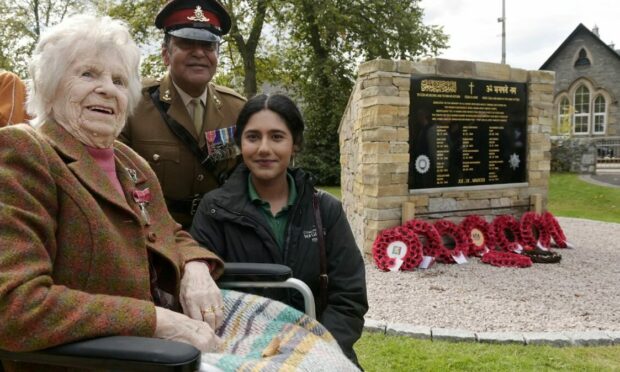
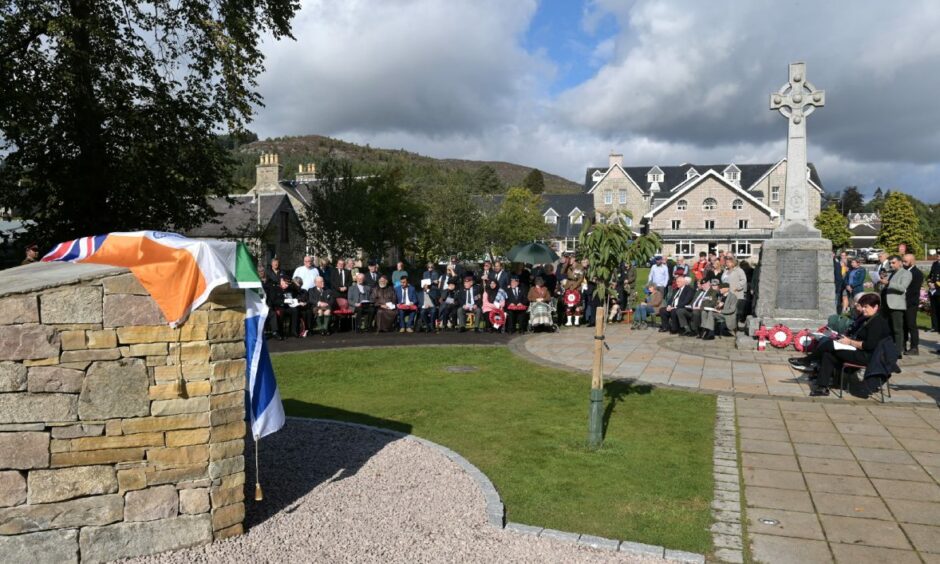
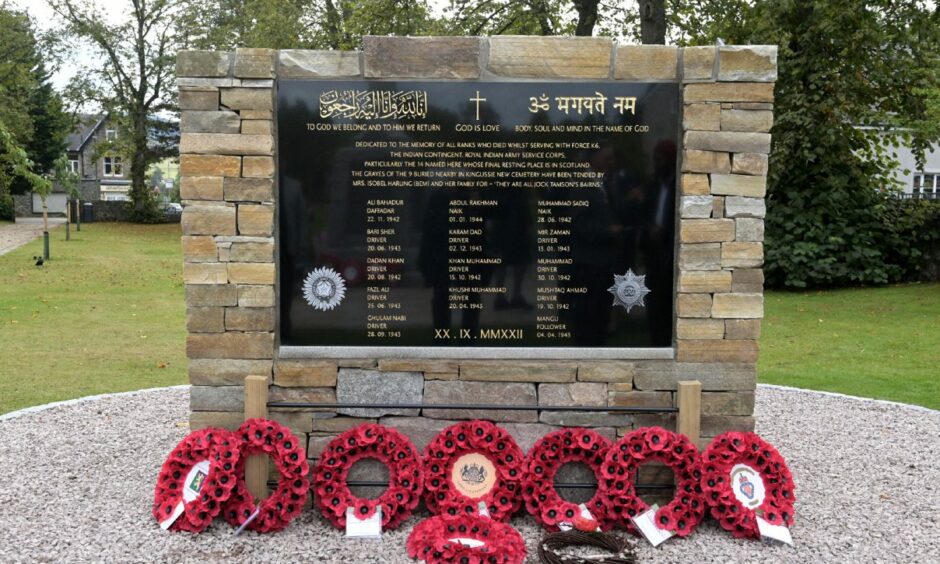
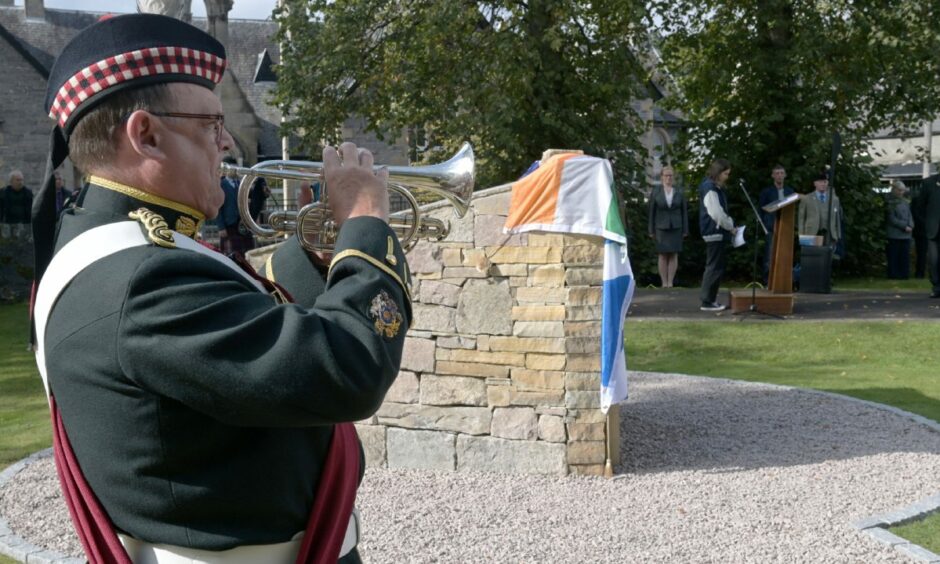
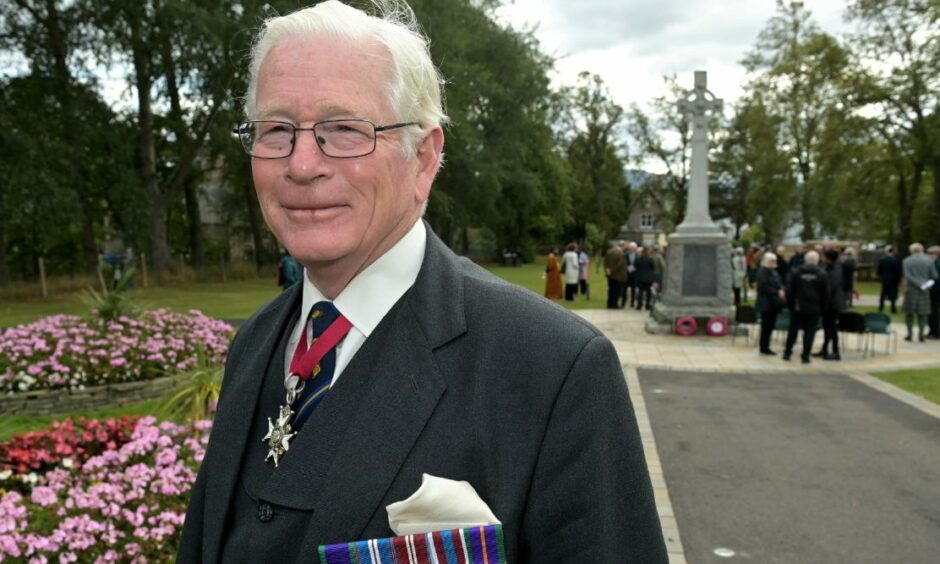
Conversation